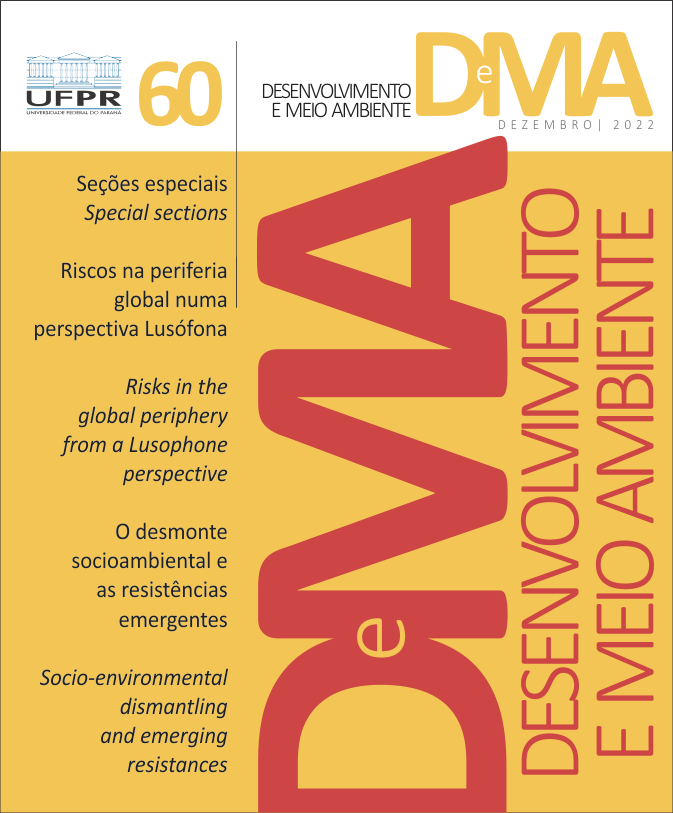Public school, geographical education and expanded socio-environmental vulnerability in times of the COVID-19 pandemic
DOI:
https://doi.org/10.5380/dma.v60i0.85160Keywords:
pandemic, middleschooland high school, subjects, risk, body scaleAbstract
The text discusses the vulnerability of basic education geography students and teachers due to the working conditions and the lack of access to the study of socio-environmental disaster risks, elements absent in the text book. The reflections are supported by results of research and teaching carried out by researchers from federal universities of Minas Gerais, in the field of geography education, during 2020 and 2021. The surveys wer ecarried out during the Supervised Internship and the Teaching Practices under graduation courses, all carried out online. In this context, question naires were applied to 46 Geography teachers from several municipalities in the southern and south eastern regions of Minas Gerais. The discussion of the results and there flections presented here are based on the concept of Power fulk nowledge, on the idea of an intellectual teacher, on the discussion of culture bodies and on the notion of socio-environmental risks. The results show that the teaching and learning conditions, school contentand internet access in the time of Covid-19 pandemic contributed to thein creased vulnerability of students in the face of socio-environmental risks due to the lack of access to knowledge on the subject and to the students' socioeconomic reality.
Downloads
Published
How to Cite
Issue
Section
License
Copyright on works published in this journal rests with the author, with first publication rights for the journal. The content of published works is the sole responsibility of the authors. DMA is an open access journal and has adopted the Creative Commons Attribution 4.0 Not Adapted (CC-BY) license since January 2023. Therefore, when published by this journal, articles are free to share (copy and redistribute the material in any medium or format for any purpose, even commercial) and adapt (remix, transform, and create from the material for any purpose, even commercial). You must give appropriate credit, provide a link to the license and indicate if changes have been made.
The contents published by DMA from v. 53, 2020 to v. 60, 2022 are protected by the Creative Commons Attribution-NonCommercial-NoDerivatives 4.0 International license.
DMA has been an open access journal since its creation, however, from v.1 of 2000 to v. 52 of 2019, the journal did not adopt a Creative Commons license and therefore the type of license is not indicated on the first page of the articles.




